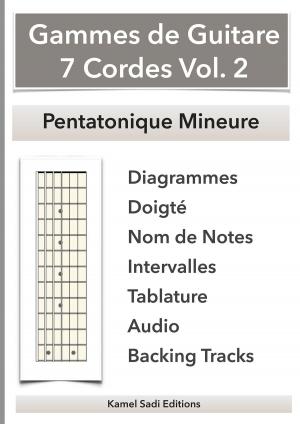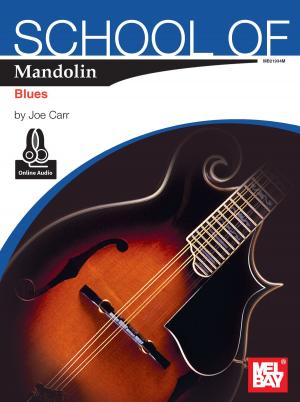Ten of the Greatest Secrets of String Playing
Nonfiction, Entertainment, Music, Instruments & Instruction, Strings, General Instruments| Author: | Byron Duckwall | ISBN: | 9781301899982 |
| Publisher: | Byron Duckwall | Publication: | January 30, 2013 |
| Imprint: | Smashwords Edition | Language: | English |
| Author: | Byron Duckwall |
| ISBN: | 9781301899982 |
| Publisher: | Byron Duckwall |
| Publication: | January 30, 2013 |
| Imprint: | Smashwords Edition |
| Language: | English |
This book contains information about how you can begin your journey to become a great string player. This method is about making a quantum leap in your playing by replacing your conditioned reflexes with your native instincts. It is about going from tight to loose and making difficult things seem easy. This method won't help you improve your current technique. Instead, it's about instantly discovering a completely different technique and approach to your instrument. It’s about producing a ringing tone that is uniquely identifiable and unleashing your musical expression. It’s about unlocking your natural talents and leaving your limitations behind.
Most string players have identified problems with their playing, whether that's I’m too double jointed or I always get nervous. It's more than likely, however, that your actual problems are not what you think they are. This method will help give you the ability to cut through all the fluff and see the actual problem. I call this “real focus” or “concentration.” The key is to learn how to tap into your native abilities, and this book will give you the tools to begin that journey.
I have helped countless cellists improve by applying the information contained in this book. But I don't want you to have to take my word for it–everything I present here should help you make a noticeable improvement in your own playing. If you'll grab your instrument and give the following example a try, you'll be able to see and hear what I mean.
The world-renowned teacher, D.C. Dounis, the man who developed the method I'm sharing with you here, would say, “If you feel tension anywhere in the body, it affects the sound negatively.” The reverse is also true. If you relieve tension in the body your sound will improve immediately. Test this theory on your instrument right now. Play any open string and then tense up any part of your body, even your face, jaw, or foot and listen to what happens to the sound.
The difference in your sound should be noticeable. And in this experiment, we're just talking about your foot! Imagine the improvement in your sound if your entire body was free of tension.
George Neikrug introduced me to the methods of Demetrius Dounis. Dounis had taught George for 15 years and had completely revamped his playing. Although George was talented, he wasn’t a prodigy, but after studying with Dounis, he did everything just like a prodigy. It didn’t take long to realize this was what I had been looking for.
George called Dounis the “Einstein of string playing,” and said he possessed extraordinary powers of observation. Dounis studied all the great players and observed the common denominators in their playing. Besides being a master musician, he also attained degrees in medicine and psychology, which allowed him to incorporate a sound scientific and artistic basis into his theories.
When George presented this information to me, I was stunned. I hadn't heard anything like it in all of my years of studying, and I could see the immediate difference it made in my own case. But I wasn't satisfied having found the information. I wanted to master it. I spent the next twenty plus years devoting myself to the task of mastering Dounis's teachings.
Today, I have come to realize the value of this information. It is unsurpassed by any string teaching commonly available today, and, despite its deep effectiveness, this information is not readily available anywhere, until now.
This book contains information about how you can begin your journey to become a great string player. This method is about making a quantum leap in your playing by replacing your conditioned reflexes with your native instincts. It is about going from tight to loose and making difficult things seem easy. This method won't help you improve your current technique. Instead, it's about instantly discovering a completely different technique and approach to your instrument. It’s about producing a ringing tone that is uniquely identifiable and unleashing your musical expression. It’s about unlocking your natural talents and leaving your limitations behind.
Most string players have identified problems with their playing, whether that's I’m too double jointed or I always get nervous. It's more than likely, however, that your actual problems are not what you think they are. This method will help give you the ability to cut through all the fluff and see the actual problem. I call this “real focus” or “concentration.” The key is to learn how to tap into your native abilities, and this book will give you the tools to begin that journey.
I have helped countless cellists improve by applying the information contained in this book. But I don't want you to have to take my word for it–everything I present here should help you make a noticeable improvement in your own playing. If you'll grab your instrument and give the following example a try, you'll be able to see and hear what I mean.
The world-renowned teacher, D.C. Dounis, the man who developed the method I'm sharing with you here, would say, “If you feel tension anywhere in the body, it affects the sound negatively.” The reverse is also true. If you relieve tension in the body your sound will improve immediately. Test this theory on your instrument right now. Play any open string and then tense up any part of your body, even your face, jaw, or foot and listen to what happens to the sound.
The difference in your sound should be noticeable. And in this experiment, we're just talking about your foot! Imagine the improvement in your sound if your entire body was free of tension.
George Neikrug introduced me to the methods of Demetrius Dounis. Dounis had taught George for 15 years and had completely revamped his playing. Although George was talented, he wasn’t a prodigy, but after studying with Dounis, he did everything just like a prodigy. It didn’t take long to realize this was what I had been looking for.
George called Dounis the “Einstein of string playing,” and said he possessed extraordinary powers of observation. Dounis studied all the great players and observed the common denominators in their playing. Besides being a master musician, he also attained degrees in medicine and psychology, which allowed him to incorporate a sound scientific and artistic basis into his theories.
When George presented this information to me, I was stunned. I hadn't heard anything like it in all of my years of studying, and I could see the immediate difference it made in my own case. But I wasn't satisfied having found the information. I wanted to master it. I spent the next twenty plus years devoting myself to the task of mastering Dounis's teachings.
Today, I have come to realize the value of this information. It is unsurpassed by any string teaching commonly available today, and, despite its deep effectiveness, this information is not readily available anywhere, until now.















